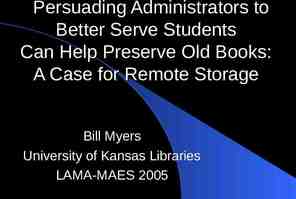Image Sharing Review and Update 2011 David S. Mendelson, M.D.
50 Slides2.75 MB
Image Sharing Review and Update 2011 David S. Mendelson, M.D. Professor of Radiology Chief of Clinical Informatics The Mount Sinai Medical Center Co-chair IHE International Board
Image sharing- Why? Benefit of historical exam during interpretation Rapidly growing cost of healthcare especially growing utilization of imaging – Overutilization – Prevent duplicate exam because a recent exam is inaccessible Radiation exposure Quality – Expedites clinical care through easy availability of imaging examination
Issues that govern sharing Imaging Exams What is our product? Who are our customers? What are the mechanisms of sharing? What are the impediments? – Technology – Policy
Our Product – Information! Imaging Exam – Order – Direct patient history – Prior exams Report – Demographics Referring Clinician Reporting Team – Indication – Narrative Procedure – Impression – Structured report
Issues that govern sharing Imaging Exams What is our product? Who are our customers? What are the mechanisms of sharing? What are the impediments? – Technology – Policy
Radiology Patient Physician 2nd Radiology Patient Consulting Physician Clinical Trial
Issues that govern sharing Imaging Exams What is our product? Who are our customers? What are the mechanisms of sharing? What are the impediments? – Technology – Policy
Film Are you old enough to remember film? Still exists – Clinical offices
The “CD”- “better than sliced bread” or “be careful what you ask for – you may get it” Portable Compact Can hold thousands of images Inexpensive ( 0.50 or less) What’s wrong here?
CDs- Problems Different data formats – Non-Dicom Different viewers – End-user confusion Defective Discs Disc must be in your possession Patient Identity Wrong Patient on Disc Time consuming Clinician’s are confused – They share their confusion with their Radiologist
Help!
CD- Opportunities to improve Importing a disc provides the opportunity to correct Robust import solutions -commercial – Standard import interface Reconciliation process – Trained personnel Standards – DICOM – PDI extensions (IHE- Portable Documents for Imaging) – BIR- (IHE- Basic Image Review) Minimum requirement for review
Mechanisms of Sharing- Reports Mail RIS FAX E-Mail PACS – VPN Internet – EMR-Patient Portal – PHR
When to release a Report vs. Image? The patient is entitled Immediate use to – Legal clinician – Practical May be meaningless to most patients other than – Is the patient a curiosity prepared for the information in the report?
Network/Internet base sharing Replace the CD (SneakerNet) with the Internet Convenience vs. Security New opportunities – Shared Image processing Efficiencies
Network/Internet base sharing Proprietary applications – Usually used within an enterprise or a limited domain with legal agreements Health Information Exchange (HIE) – Multiple enterprises with a set of legal agreements – Often have selected their own standards- not truly open standards based – Sustainability
Network/Internet VPN/Enterprise Portal – Clinical Staff – Patient – Temporary credentials Enterprise- multi-sites; proprietary solution – Multiple PACS and RIS feed one central archive – All credentialed can view that archive Point to Point networks HIE – Standards based or proprietary sharing network IHE model Patient Centric model / PHR
Challenges to exchange Who pays for an exchange infrastructure What is the persistence of the information in the exchange Are images different from other forms of healthcare data Easy secure access is good for the patient – Does it endanger the provider?- is this an impediment? – Economic adjustments and evolution are likely to occur Balance of cost control vs. Quality Reduction in Radiation exposure – Not all patients agree
Point to Point A limited number of entities establish direct connections Usually requires a direct formal relationship (legal) Can be successful to address very specific interoperability problems Doesn’t scale
HIE Requires legal relationships between participants Requires patient identity management Enables a greater number of entities to participate – May be scalable – HIE to HIE Consent issues – Commonly all or nothing rather than episode or event based – Patients may wish to only expose limited pieces of data
Sharing Healthcare Information in the Cloud Primary Doctor Hospital Specialist Imaging Center Hospital Patient Patient Surrogate
Cloud Computing WHO WHAT Enterprise HIE Consumer Services Transactions Archive
IHE-XDS (Cross-Enterprise Document Sharing) XDS.a XDS- I.a XDS.b – ? XDS-I.b a vs. b – Related to web standards and transactions
XDS
XDS-I
Canada Health Infoway
A Standards Based Solution NIBIB/RSNA IMAGE SHARING PROJECT
Goals of Contract NIBIB contract Bootstrap an IHE based network – Primary emphasis is Consumer Control through PHRs – Can be extended to other forms of sharing HIE Security and Confidentiality are drivers Replacement / Alternative to CD
NIBIB contract summary Consumer Control Employ IHE solutions whenever possible – IHE generally has not focused on consumer driven solutions but rather on institutional and enterprise workflow 5 Academic Institutions – Mayo Clinic – Mount Sinai Medical Center – University of California San Francisco – University of Chicago – University of Maryland Establish a clearinghouse Engage PHRs 300,000 patients over 2 years
Image Sharing/Elements of Solution Edge Server – Register a patient – Listens to a Radiology Information System (RIS)- looking for a complete exam – Retrieves Image set from PACS and Report from RIS – Send both to clearinghouse PHI hidden; an RSNA ID and 2nd factor security token are used to identify the patient Clearinghouse (XDS-I) – functions as a secure router – Transiently hold encrypted patient data PHR – Consumer controls upload and future access Must have RSNA ID available and know answer to 2 nd factor question – Develop web based viewers – Download full DICOM data set Misc Consumers
Software architecture Protocol Flow From RIS PACS Qry/Rtrv R S R C H A D M I N Web/ MIRTH Java DICOM Srv Dbase HL7 Firewall XDS.b & token OS Edge Appliance Prepare content Poll database, get report, get exam,prepare big fat file Background java srvlet 25 days Transfer content Poll database for transfer out, package content into xds.b Background java srvlet 35 days HL7 receiver Receive HL7 A04 messages, extract reports and store them in database Mirth HL7 Channel. Let Mirth create its default database, all script work-but may have to customize per site 65 days for 5 sites Token App Create new tokens based on two parts, associate token with accession numbers, update database, user interface with login, get patient info,create job Ajax based web front-end ,JavaServlet for CFIND using dcm4che, creating job in the RSNA database, creating tokens using kerberos – tokens generated locally 30 days Database Store reports, logs, audit trails, user accounts, etc. Mirth instance for HL7 & DICOM, RSNA instance for everything else 50 days – 2 databases Management App Create users, monitor logs, check health Ajax gui front end, backend servlet, dicom targets etc. 45 days Clearing House
Project design assumptions Security is paramount – Restrictive policy – PHI is never unsecured Consumer controls the flow of information by placing it in the PHR – Diminishes the need for BAAs between enterprises Imaging Site to Clearinghouse Clearinghouse to PHR
Image Enabled PHR
Report
Advantages of Approach Push model – No Query of PACS from outside the firewall Full DICOM data set is available – Web viewers – Download and Import to PACS Report is available Historical exams can be sent simultaneously Consumer controls flow of information – Affords the patient the ability to select what information to share Is this good?
Future Directions Refine Workflow – Initial workflow is to replace a CD – Exam updates – Download DICOM data and archive in a local PACS Edge server as a platform – Radiation Monitoring – Peer Review – Quality Metrics
Research CTP- The RSNA Clinical Trial Processor CTP is a stand-alone program that provides all the processing features of a MIRC site for clinical trials in a highly configurable and extensible application. It connects to FieldCenter applications and can also connect to MIRC sites when necessary. CTP has the following key features: Single-click installation. Support for multiple pipelines. Processing pipelines supporting multiple configurable stages. Support for multiple quarantines for data objects which are rejected during processing. Pre-defined implementations for key components: – – – – – – – – – HTTP Import DICOM Import DICOM Anonymizer XML Anonymizer File Storage Database Export HTTP Export DICOM Export FTP Export Web-based monitoring of the application's status, including: – – – – configuration logs quarantines status
Issues that govern sharing Imaging Exams What is our product? Who are our customers? What are the mechanisms of sharing? What are the impediments? – Technology – Policy
Conclusions We live in a heterogeneous world needing multiple solutions CDs and portable media have both advantages and drawbacks – Compliance with standards helps We are transitioning to network/internet solutions – Security and confidentiality are even more difficult – ONC and State policies will foster these solutions – Solutions are evolving Proprietary solutions are often easier to implement Solutions based on open standards will provide the patient with greater flexibility Interoperability will require an adjustment to the way we all think of healthcare data























































